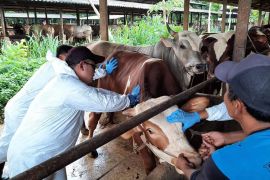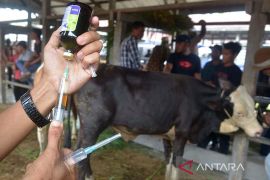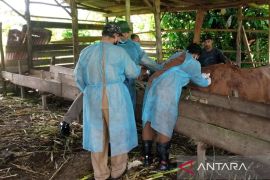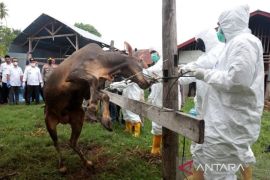During the ‘Talk to Scientists’ webinar on Thursday, BRIN Head Laksana Tri Handoko said that FMD is an acute viral infection and is highly transmissible among even-toed and split-toed animals.
Examples of such animals include cows, buffaloes, sheep, goats, pigs, deer, camels, and elephants. However, it has been reported that it can infect other animals such as bears, he noted.
Animals contracting foot-and-mouth disease also show pathognomonic clinical symptoms such as vesicles or blisters as well as erosions in the mouth, tongue, gums, nostrils, nipples, and skin around nails, he said.
To support the government's effort to control foot-and-mouth disease, BRIN is carrying out FMD detection as well as epidemiological studies.
The agency is also conducting a molecular analysis to isolate and characterize the virus that causes the disease.
Moreover, BRIN is helping out by identifying compatible vaccines, developing fast detection methods, and developing vaccines to check the spread of FMD.
Related news: Agriculture Ministry's handling of FMD in livestock draws praises
The Office des Internationale Epizootics (OIE) has included foot-and-mouth disease on the list of diseases that must be reported by every country in the world.
BRIN Health Research Organization head Ni Luh P. Indi Dharmasanti said that FMD must be watched out for because it can spread quickly by following animals' transportation flow.
The spread of foot-and-mouth disease can cause huge economic losses because it devalues livestock products, she informed.
Moreover, it has been estimated that Indonesia will require around Rp9.9 trillion per year or even more to handle the outbreak, she added.
Earlier on Wednesday, Speaker of the House of Representatives (DPR), Puan Maharani, had urged the government to take quick action against the spread of FMD.
Related news: Police urge people to report livestock infected with FMD
Translator: Martha H S, Fadhli Ruhman
Editor: Rahmad Nasution
Copyright © ANTARA 2022












